You’re visiting Tikkurila website from United Kingdom. Would you like to visit the local UK site?
Colour choosing guide for house painting
When choosing a house colour, you commit for many years to come. Read Tikkurila's colour expert's tips for selecting colour for your house.
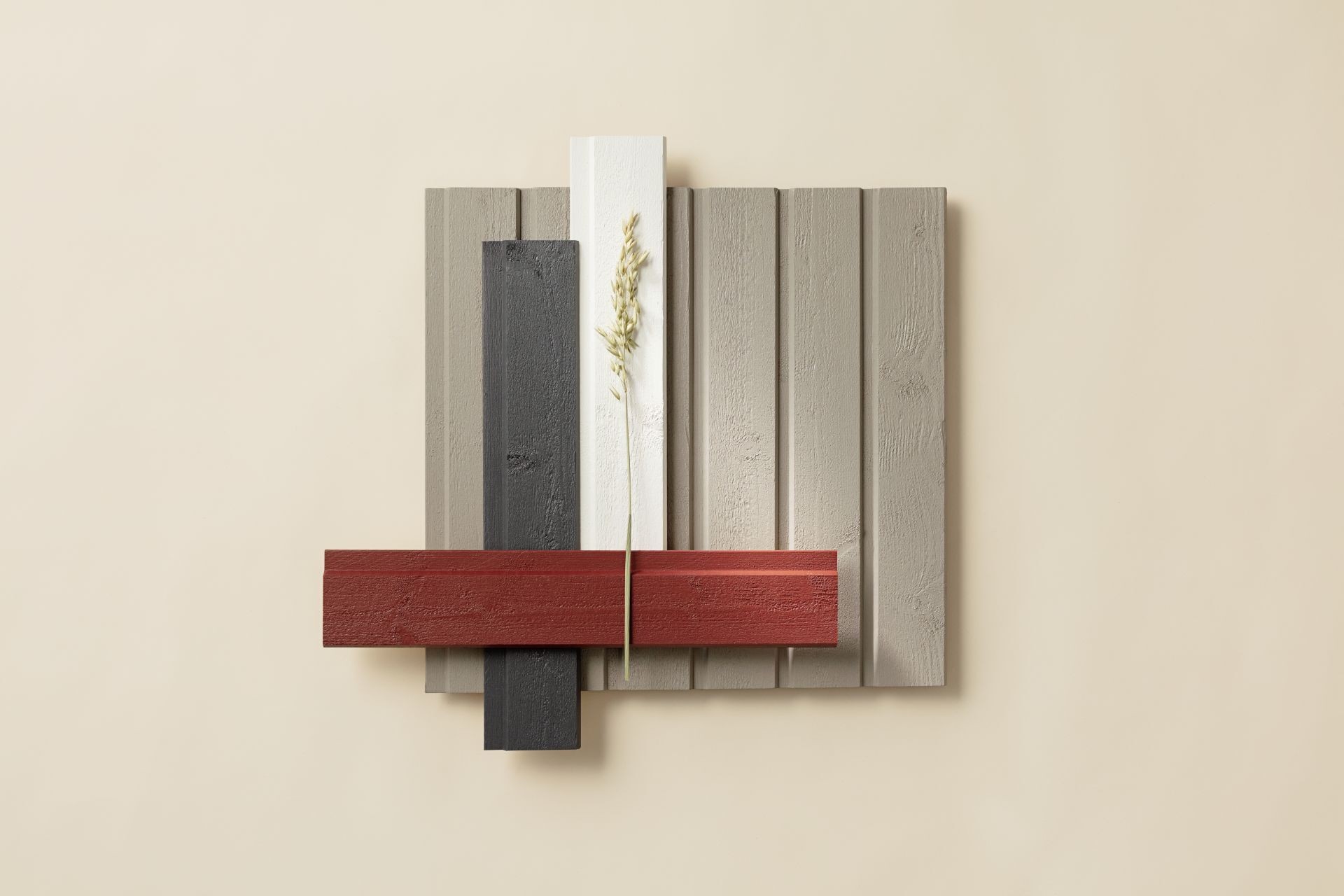
1. Choose a shade that suits the environment of the house
Design your house as part of the environment. Is the building located in a dense urban area, in the countryside, in a field, in the middle of a forest or by a lake?
In urban areas, the use of colours has been limited to create a uniform look. If you plan to change the colours radically, contact the local planning authority. Otherwise, observe your surroundings, draw ideas from nature and ready-made colour combinations.
The colours look different up close and far away. Dark surfaces blend into nature better when viewed from a distance, while light ones stand out clearly. In open and bright places, buildings can be lighter in tone, while at the edge of a dark forest, a darker tone usually looks better.
The time of day, the weather and the changing of the environment according to the seasons affect the perception of colour. Autumn's brown, winter's snow, spring's greenery and summer's rich hues all create a different frame for the shade you choose.
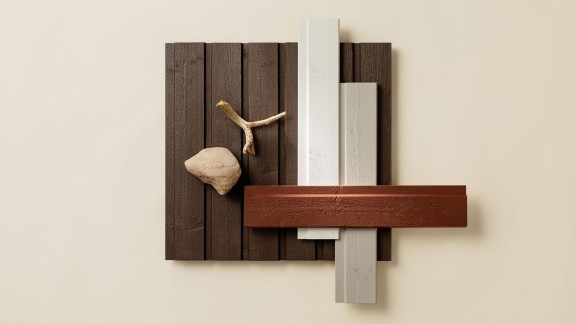
2. Choose a more subdued and darker house colour than you thought
Colours often look lighter and brighter on a large surface surrounded by the strong colours of nature than in a small colour sample of the colour chart on a white background. Choose a more subdued and darker colour from the colour chart than you thought - this way you are usually closer to the desired result.
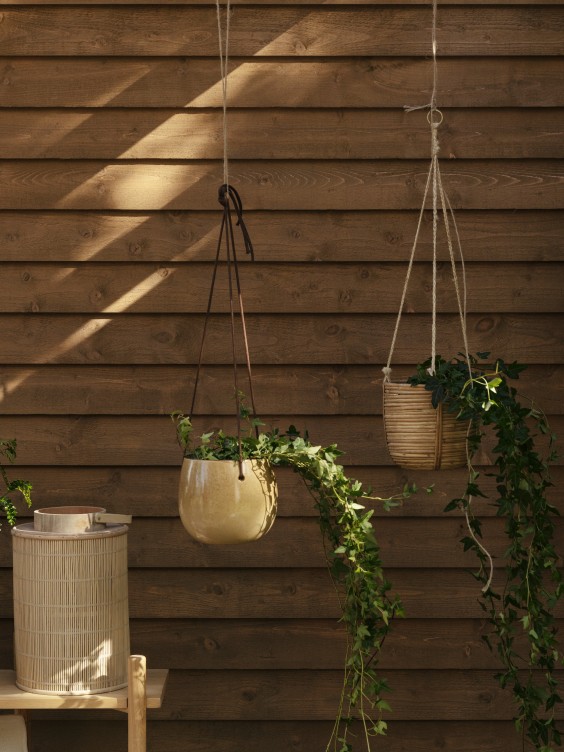
3. Translucent or opaque house colour?
If you’re repainting an old house painted with an opaque finish, you’ll need to go with an opaque this time also. This is the case also with a new house if the facade is factory primed. But, if you have a clean wooden facade, a translucent finish with an organic feel might be a good option. Try different shades on your facade to find the perfect tone – the shade is always affected by the colour of the wood underneath.
4. Choosing the accent colour
Sometimes more than one colour is just what your house needs. An accent colour in the right place, such as planking details or the walls of a recessed terrace, makes the house facade one of a kind, and brings some symmetry and rhythm to the look.
When choosing the accent colour, it’s beneficial to consider if you want the house to blend in with the environment or if you’d rather have it stand out. Dark colours tend to merge with the surroundings, whereas light colours shine bright.
If you’re looking for contrast, pair complementary colours or dark tones with light shades. On the contrary, when looking for balance and harmony, pair matching, kindred colours.
The most important thing is to check the restrictions with your local planning authority. Also, always remember to test the colours together in the right surroundings. Use test plates and see how they look at different times of the day.
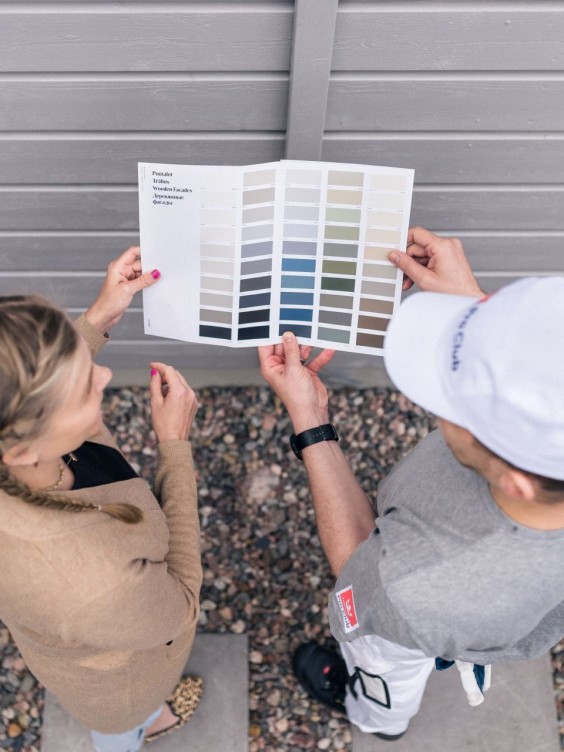
5. View the colour samples under the right conditions
View the colour samples in natural light outdoors and vertically. Outdoors, the colour scheme often looks lighter and bluer than indoors. Against the white background of the colour card, the colour intended for the outside looks significantly darker than in its real environment.
The time of year and day also affect the perception of colour, so in the dusk of the evening and the bright light of the morning, the facade looks completely different.
6. Make a test painting
Make sure of the right shade by painting a square test area. The choice of colour can be made easier by making a test painting on a separate plate or wooden block and looking at the colour in the right lighting and environment. When using translucent products, remember that the colour is also affected by the tone and quality of the underlying wood material. You can get a small 0.225 litre can of the covering Ultra Classic and audible Valtti Plus Color for test painting.
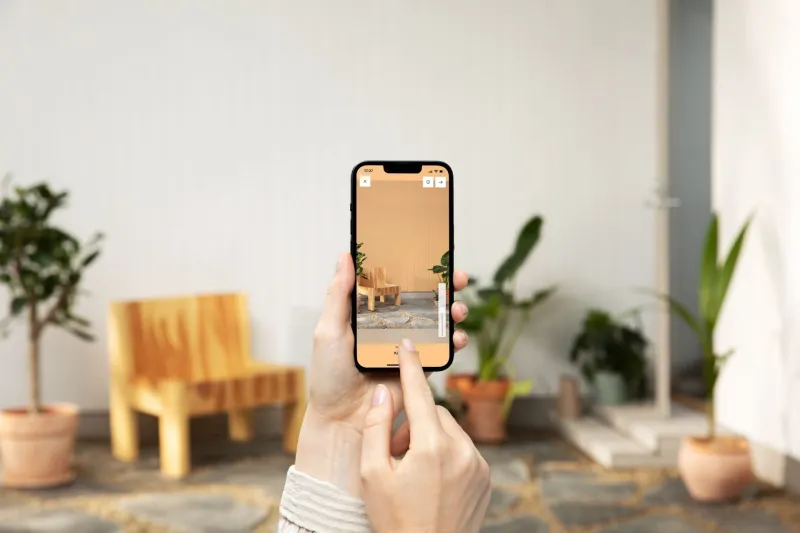
7. Try different colours with Tikkurila Colour master
Find out how Tikkurila colours would look on your exterior walls with the new AR exterior wall painter feature. With our AR feature you can see how our colours would really look on your house exterior. Upload your image, choose the colour you want and see the result in augmented reality. You can also save your creations for later.
Popular exterior colours
Learn more tips about the most popular exterior colours.

Dark or black exterior colours
The use of dark colours in wooden facades has increased in recent years. Dark tones often blend seamlessly into our landscape, so it's easy to build a connection between the surrounding nature and the building. A dark facade colour does not automatically mean just black, but even dark shades have beautiful, restrained nuances, and the variation of natural light brings the surfaces to life beautifully. Try for example D129 Korppi, Q829 Nuotio or Q707 Peikko.

White or beige exterior colours
The white facade is a surface that stands out against the landscape and can be noticed from a distance away. When you compare white shades against nature, you can notice that completely pure white stands out brightly. A softer impression is given by muted white, which blends more seamlessly with the natural tones. Our white and beige favourites are Q819 Kide, Q824 Tunturi or Q608 Ranta.
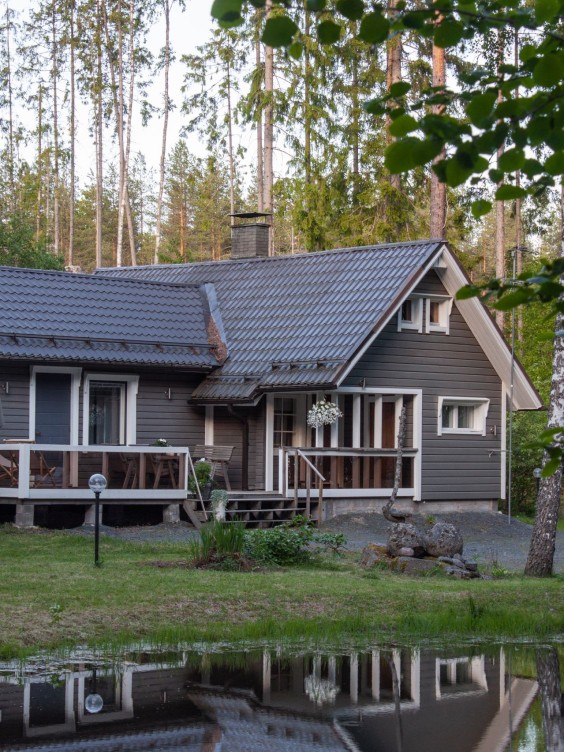
Grey exterior colours
Finding the right shade of grey takes a while, because the environment affects our perception and brings out the different nuances of grey. Enjoy grey harmony with our shades Q845 Halli, Q859 Myrskylintu or Q802 Haikara. When the house is surrounded by nature, look for greys with a hint of warm brown or green. When the house is in an environment where rock and sky dominate the landscape, a cool blue-grey can be just the right solution
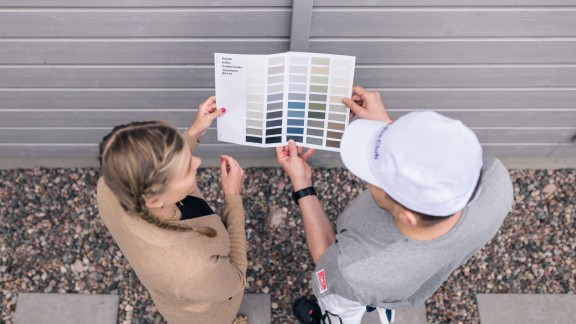
Colour testing for house painting
Learn more about how to use colour samples to test a colour for your home.
